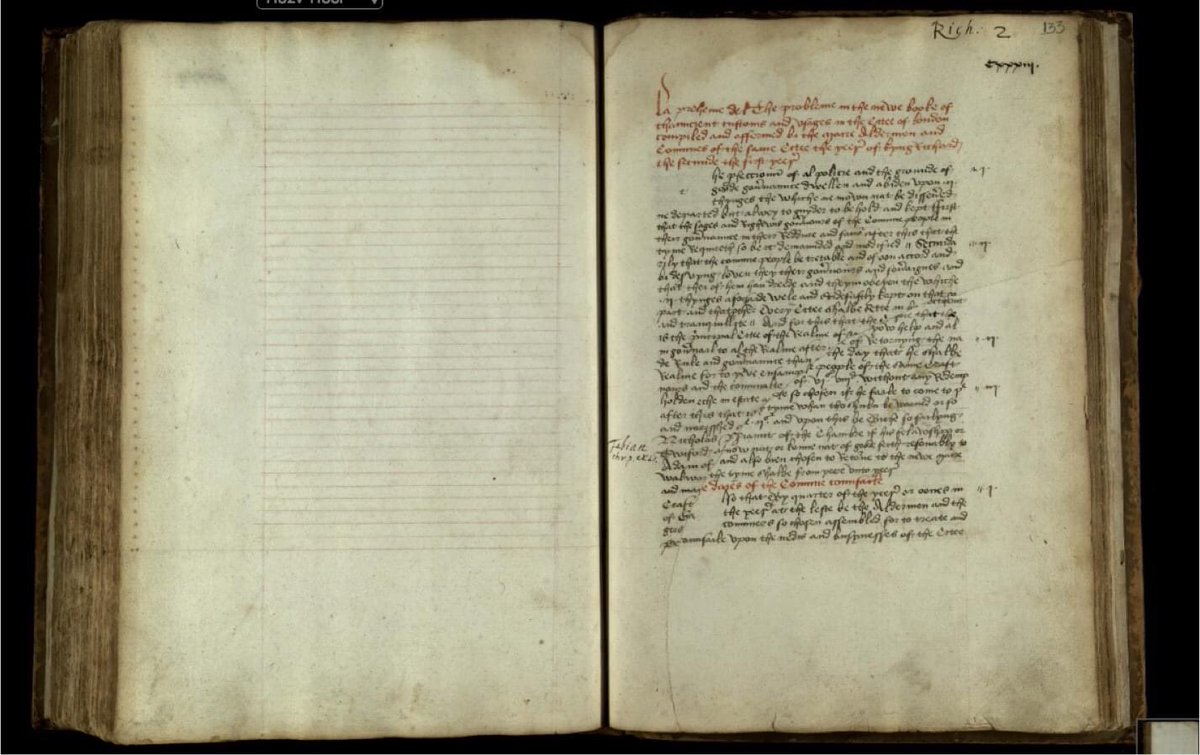#FunFactFriday is upon us #localhistory peeps. We’ll be travelling back in time to the world of #medieval London to explore the Jubilee Book, a text that had a notorious reputation.
Created in 1376, the Jubilee Book was made to reform governance in London. The Jubilee Book, however, was not received well by all.
In an indictment dated to 1381 (the year of the Peasants’ Revolt), we see that Walter atte Keye, a brewer, of Wood Street, went to the London Guildhall, which was in the parish of St Laurence, Old Jewry.
 : The National Archives, KB 27/482, Rex rot. 43
: The National Archives, KB 27/482, Rex rot. 43
 : The National Archives, KB 27/482, Rex rot. 43
: The National Archives, KB 27/482, Rex rot. 43
He went with the intention of burning down the Guildhall and with it the Jubilee Book. When he couldn’t find it there, he went to Milk Street, where the King’s Compter was located, and searched for the book there, determined to burn it to ashes.
 : The National Archives, KB 27/482, Rex rot. 43
: The National Archives, KB 27/482, Rex rot. 43
Sadly the Jubilee Book was not to survive for long after Keye’s destructive attempts. In 1387, the book met its demise outside London’s Guildhall when the Common Council, led by Nicholas Exton, London’s mayor, agreed that the text was to be burnt to avoid any further conflicts.
Although the text was burnt in 1387, it was copied and we have what we think is a fifteenth-century copy of the Jubilee Book within a lovely manuscript held at Trinity College in Cambridge.
 : Trinity College Cambridge, MS O 3 11, fol. 132v-133r
: Trinity College Cambridge, MS O 3 11, fol. 132v-133r
 : Trinity College Cambridge, MS O 3 11, fol. 132v-133r
: Trinity College Cambridge, MS O 3 11, fol. 132v-133r
Have you got a #localhistory #FunFact that you’d like to share with us? We’d love to hear about your #localhistory research and the amazing stories you have to tell. See you for more #FunFacts next Friday!

 Read on Twitter
Read on Twitter




